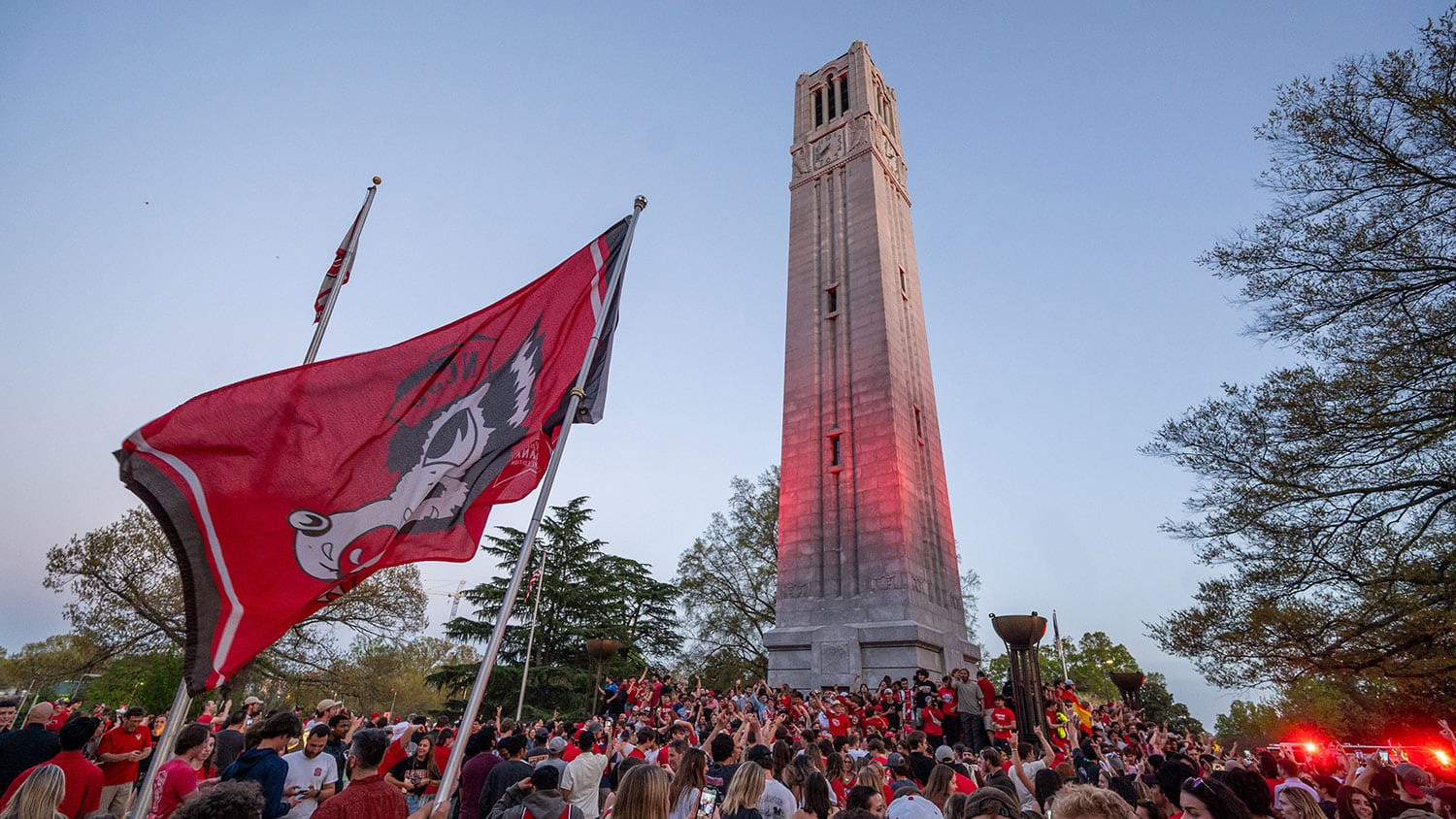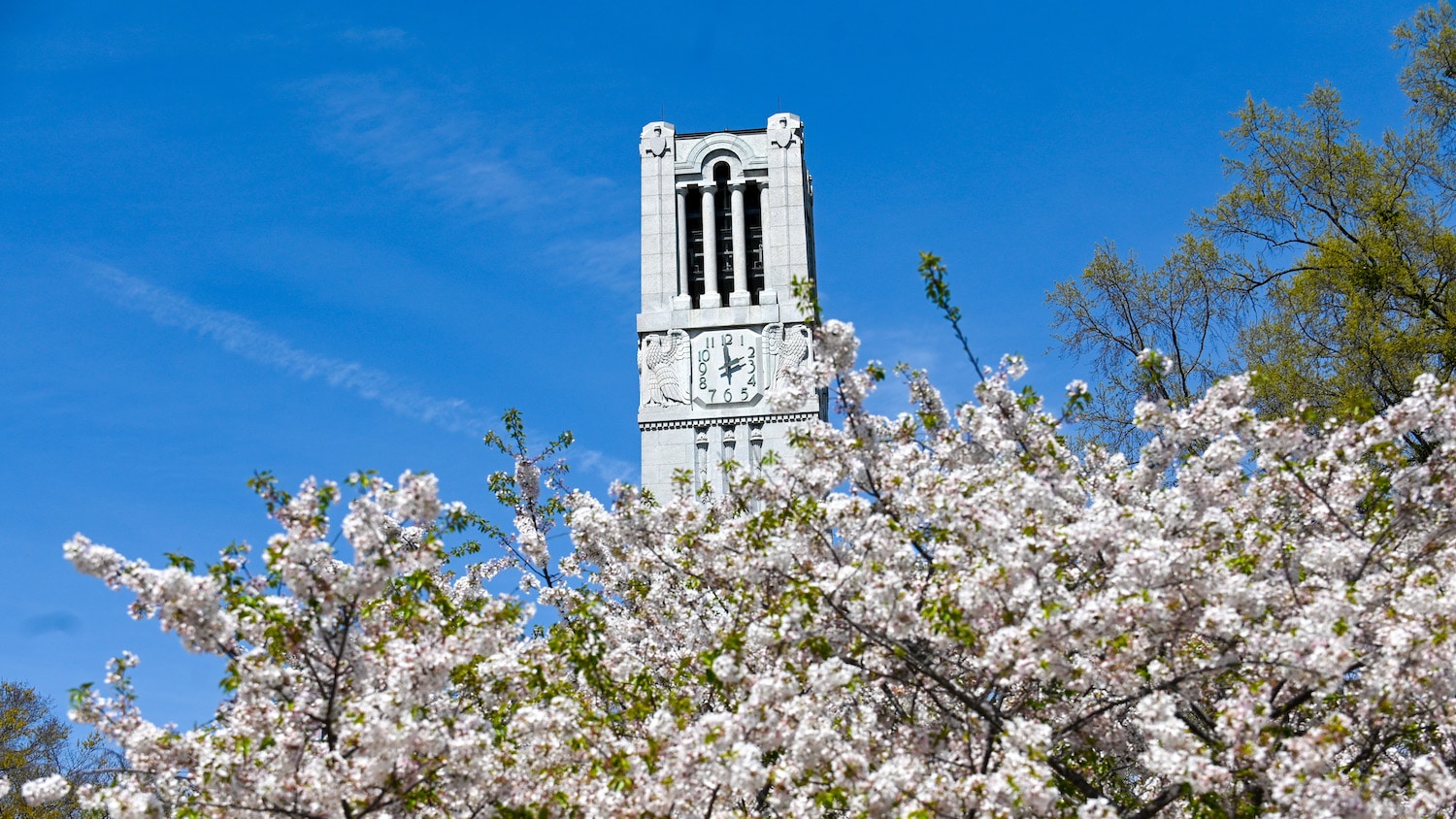GLBT Center Celebrates a Decade on Campus
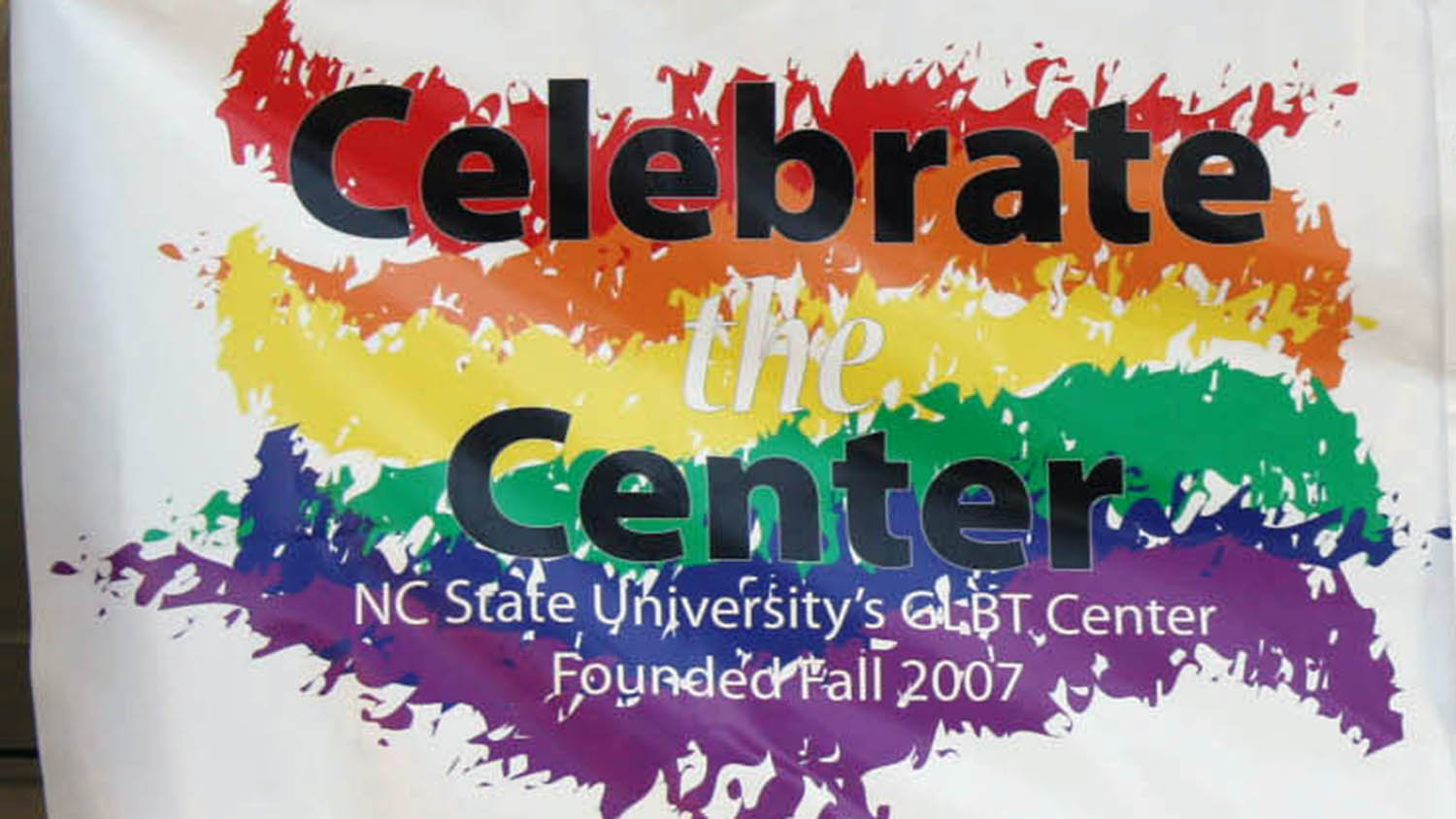
It’s hard to miss the GLBT Center on the fifth floor in Talley Student Union. Signs declaring “Black Lives Matter” and promoting women’s rights adorn the large windows. Bookcases and colorful seats encourage visitors to spend time in the large, airy lounge.
That wasn’t always the case. When the GLBT Center opened in 2008, it occupied a small, inconspicuous space just off the student center lobby.
On Feb. 12, the center celebrates its 10th anniversary with an event that examines its past, present and future through an exhibition and a slate of speakers. The celebration will take place in the Piedmont-Mountains Ballroom in the Talley Student Union.
From the beginning, the center advocated for LGBT students. It also provided a support system so they could feel comfortable and flourish both academically and personally and enjoy their university experience. It has since expanded its mission as well as its space. It’s still a place to welcome LGBT students and educate others about the community, but now it’s also a place that champions equality and inclusivity for people of all identities.
“We’re doing education, but we’re doing a very different kind of education and engaging people in very different ways in the process,” Director Renee Wells says.
The Difference a Forum Makes
Justine Hollingshead, chief of staff and assistant vice chancellor with the Division of Academic and Student Affairs, recalls the decision to create a dedicated center.
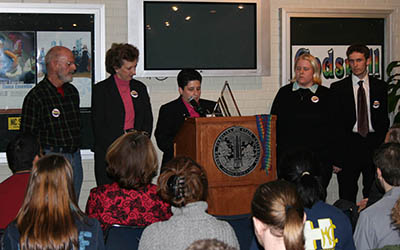
The LGBT community had established its presence decades before, Hollingshead says. NC State has had a student group for the community since the 1960s. In the mid-1990s the university had a group called BGLA (Bisexuals, Gays, Lesbians and Allies). Awareness training for allies, called Project SAFE, debuted shortly afterward, at first just for faculty and staff and then for students. Continued efforts to support LGBT students, expand training and roll out additional programming grew over the years.
In 2004, a subcommittee of the University Diversity Advisory Committee formed to focus on issues related to the LGBT community. Led by statistics professor Bill Swallow, the group of faculty, staff and students examined national trends, did a campus climate survey and gathered data and information demonstrating the need for a dedicated LGBT center on campus.
“It was not a surprise to me that the climate was not welcoming for GLBT students,” Hollingshead says. “But we needed that information to affirm what we knew.”
In 2007 Student Government hosted a forum to discuss the initiative. Facilitators included Jose Picart, vice provost for diversity; Tom Stafford, vice chancellor for student affairs; Richard Tyler-Walker of the Counseling Center; and Deb Luckadoo, director of campus activities. Provost Larry Nielsen also attended, as did students, members of the public and the media. In a 2016 story for the Bulletin, Luckadoo recalled how some members of the audience applauded that night when they heard LGBT youth have a higher rate of suicide than other youth.
“It was very emotional, very tense,” Hollingshead says. “I saw the color on Dr. Nielsen’s face change.”
The next day, the provost talked with Stafford and Picart and approved Swallow’s proposal to create the GLBT Center.
“If you would have asked me in 1995, when I came here to work, would we ever have a GLBT center here on campus, I would have told you no, no way, that’s not happening here,” Hollingshead says.
That forum was a pivotal moment. NC State would become the second university in the North Carolina system to open a center especially for the LGBT community.
A Decade of Growth
The center officially debuted Jan. 23, 2008. Hollingshead, the founding director, felt proud — but cautious. Plainclothes police attended the event to provide security, but the ribbon-cutting before a large and supportive crowd went smoothly.
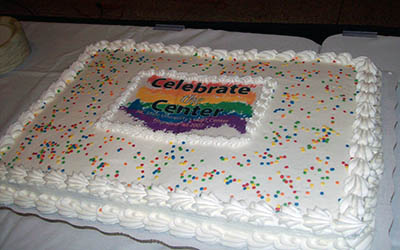
The center initially operated in room provided by Arts NC State, then moved to a more visible space on the third floor of the student center, with a rainbow flag in the window overlooking the atrium signaling the center’s mission. The center moved to Harrelson Hall in 2011 when Talley closed for renovation, and then relocated to its current space when Talley reopened in 2014.
Staffing grew along the way. At first Hollingshead worked with just a graduate student and a student worker. Eventually the center added an assistant director and a program administrator. Today the center boasts two student assistants, an administrative support associate, a program coordinator, an assistant director and Wells, as well as student volunteers who tackle projects such as archiving LGBT history at NC State.
One thing hasn’t changed: the foot traffic.
“Our lounge is always packed,” Wells says of the center today. “We’ve got students sitting on the floor every day because there’s not enough room for everybody. We serve a very large and engaged population of students.”
That’s how it’s always been, Hollingshead says.
“We had tons of students,” she says. “Very much like the GLBT Center now — students are in there all the time. That’s what the center has always been, a physical space for the students, no matter what the space was like.”
As well as a place for student support, the center has always advocated for the LGBT community and sought to educate others about it. The center took over Project SAFE from the BGLA student group, created the Lavender Graduation and implemented the Transgender 101 program to raise awareness about transgender people and issues. Staff worked hard to elevate exposure of programs and events, with notable success: The first major speaker in Talley who had an audience of almost 1,000 people was actress Laverne Cox during Diversity Education Week in 2014, Hollingshead says.
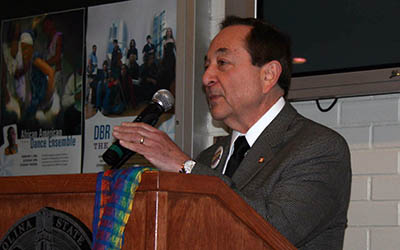
The center also became involved in work off campus, helping with the creation of the LGBT Center in Raleigh. Hollingshead, who served on the board of that center for six years, says it’s an option for people not comfortable with going to the center on campus.
Not everything has gone smoothly. Anti-LGBT slurs have shown up in the Free Expression Tunnel, and Hollingshead says hateful fliers have occasionally been distributed around campus. In October 2011, homophobic graffiti appeared on the center itself.
Campus reaction to the incident was “phenomenal,” Hollingshead says. Students rallied in the Brickyard to condemn the incident, as did the provost. Chancellor Randy Woodson was out of the country at the time but emailed every day to check in and see how people were doing.
“The support categorically from the top down here at NC State has always been unwavering,” Hollingshead says. “I think that’s an important part of how NC State has been successful in our support of the GLBT community on campus.”
The Center Today
Ten years after it opened, the center enjoys campuswide support. It’s still a place to learn about the LGBT community, but in a new way. Most people have a baseline knowledge about LGBT individuals and issues, says Wells, who became director in August 2014. The goal is to build on that.
“A lot of the barriers that students face are because people just don’t know a lot about the community, and they’ll unintentionally say things that students find offensive,” Wells says. “Even just really outdated terminology that is now considered inappropriate, and people don’t know that.”
The center has added programs, including the Volunteer Internship Practicum Program and the GLBT Advocate Program. The former is for students, and the latter is continuing education for faculty and staff. The LGBT community is not static, Wells says; terminology and issues shift over time, so learning is a constant process. The center also educates beyond campus, including a youth leadership summit this month for LGBT-identified high school students from Wake and Durham counties.
Intersectionality plays a key role in the center’s work. Project SAFE and Transgender 101 still exist, but there are also programs and workshops that talk about how people have multiple identities. Those include Queer and Transgender People of Color, a bimonthly meeting that discusses how racial, ethnic and LGBT identities influence one another, and a collaboration with the Women’s Center on intersectional feminist theory.
“We can’t just teach people ways to be inclusive around sexuality or gender; they need to be comprehensively inclusive,” Wells says. “They aren’t just focused on LGBT as an isolated part of identity. They’re looking at ability, race, privilege and oppression and all of these things that we need people to understand because they impact our campus climate.”
A Milestone and a Steppingstone
Wells sees the center’s 10th anniversary as a steppingstone as much as a milestone. Many LGBT alumni will be missing from the Feb. 12 celebration, something she hopes will change in the future.
“One of the challenges we’re trying to navigate is because of the nature of this population and the history, and the fact that we don’t track this aspect of identity, we don’t even know who all of our alumni are,” she says. “Us trying to do a lot of stuff without having all those folks to reach out to and engage felt like there was a big piece of the puzzle missing. We’re hoping, moving forward, to have the capacity to really try to make the next celebration something that engages a much broader population.”
Hollingshead agrees the LGBT community still faces challenges, but she is happy to see widespread student support for the center.
“We see more students come to campus every year being out, or being an ally, wanting to get involved in programmatic outreach efforts,” Hollingshead says. “We still have lots of inequalities that are out there: employment, some of the things targeting the transgender community. We still have a lot of work to do. I see students taking this up, students who are more service-oriented and advocacy-oriented, so that gives me hope.”
- Categories:

